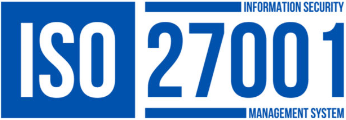One of the most frequent questions we hear HR decision-makers and professionals asking is why it is that arguably the most powerful tool available in the HR arsenal is yielding such abysmal results. In any other discipline, a tool with such a poor track record would almost certainly have been thrown out or radically changed, but we appear unable or unwilling to formulate alternatives that leave employees feeling motivated to raise their performance and engagement to levels organisations require to remain successful in today’s hyper-competitive, fast-changing business environment.
See how Strengthscope® can provide a clear picture of each employee’s strengths and risks at work

The reality is that most appraisal systems in organisations today are highly proceduralised and bureaucratic in nature and involve a lot of tedious form filling which typically takes more time than the conversations themselves. As pointed out by the late management guru and author, Peter Drucker, both managers and employees dislike the process.
Managers loathe it because of the mounds of paperwork and the fact that they are set up in a way that requires managers to spend a lot of time criticising others. Employees generally dislike the process because they know their manager is compelled to criticise them to justify any pay increase which is average or below average and because most managers are ill-equipped for this type of confrontational discussion, which leaves the employee feeling demotivated and devalued.
So how can we address some of the common problems inherent in appraisals today?
1. Ditch the widely used ‘sandwich approach’
For many decades, human resources and training professionals have enthusiastically advocated using a sandwich approach as a recommended formula for running appraisal meetings. The intention of this approach, which involves sandwiching the negative feedback between a positive opening and closing statement, was to cushion the blow of the more critical feedback. However, the sandwich approach is typically counterproductive when used with both poor and excellent performers. Poor performers pay selective attention to the positive messages and leave the meeting feeling that they’ve done better than they actually have, while excellent performers only focus on the negative parts of the message and leave the meeting demotivated about the areas in which they have fallen short.
2. Focus on strengths and future possibilities
The vast majority of appraisals are largely weakness-focused and retrospective in nature. However, decades of research shows that this is likely to undermine motivation, self-confidence and performance. In our experience, the best strategy is to focus primarily on the person’s successes and strengths (i.e., underlying characteristics that energise the person and enable them to achieve peak performance) provided they are meeting or exceeding expectations. In most organisations, around 80% of the workforce fall into these performance categories. Of course, if people are falling below the required standards, then the conversation should be focused on their shortfalls, with a robust exploration as to the reasons behind this and specific actions agreed for improvement. The person should be left with no doubts whatsoever that (s)he needs to improve and what support they can expect to help improve their performance..
A 2005 Corporate Leadership Council study involving data from over 90 000 employees in 135 organisations found that focusing on personality and performance strengths had one of the strongest impacts on employee performance of all line manager actions, improving performance by almost 40%. However, to achieve these positive effects, most organisations will need to radically rethink the way they structure their appraisal systems and training for line managers. To engender high levels of openness, empowerment and collaboration in appraisals requires implementing innovative strengths-based thinking and practices. Managers will then regard their role less as judge and critical parent and more as maximiser and enabler or employees’ strengths.
Rather than spending 80% of the time looking back at what the person has done, we also advocate focusing the majority of the time on what the person would like to do in the next appraisal period – the opportunities that they see to deploy and develop their strengths and skills so they can give contribute in the upper ranges of their potential.
3. Be realistic about how much weaknesses can be changed
Focusing on employees’ strengths doesn’t mean weaknesses should be ignored. They need to be surfaced, discussed and addressed, particularly where they are undermining role performance. However, the discussion should accept that everyone has vulnerabilities and many of those that are deeply ingrained in the person’s core personality are unlikely to change much. Of course the latest neuroscience confirms that people can learn new habits and behaviours, but trying to develop mastery in someone who doesn’t have the base potential or interest is a pointless endeavour; it simply doesn’t work. It is much easier to find someone else with the right natural strengths to perform the work or to mitigate the negative implications of the weakness as much as possible to prevent the person from failing. There are numerous way to do this, from helping the person to find partners (s)he can pair with who have complementary strengths, through mentoring and coaching, to outsourcing parts of the work or finding technology-based solutions to lessen the impact of the weaker area.
Similarly, mistakes should be treated not as punishable ‘crimes’, but as acceptable learning opportunities, especially when they occur the first time. This will not only motivate the person, but will also fuel a culture of learning, transparency, honesty and innovation.
4. Focus on a few key priorities at a time
A lot of recent research has highlighted the importance of focusing employees’ attention to avoid the attention deficit trap, overload and risk of burnout we see in many organisations today. To avoid these problems, we suggest simplifying goal setting to no more than 3 priorities for each 3 month period, what we call the “3 x 3” approach to goal-setting. We have found this to be a particularly powerful way to focus the employees’ attention on the tasks that are going to make the biggest difference to the company’s performance. Of course, priorities can be rolled over into the next performance period if they are complex and/or require more than 3 months to accomplish. One of these priorities should probably be a ‘stretch goal’, which is extremely challenging to achieve and requires the person to move outside their comfort zone (or zone of psychological safety) and work in creative and collaborative ways to achieve the goal.
5. Learn from Peter Drucker’s wisdom
Translating this all into a pragmatic structure for a regular appraisal conversation is simpler than one would imagine. Using Drucker’s approach as a start point, we have developed the following powerful questions to guide the performance dialogue:
- What has the person achieved against the expectations set for them?
- What has (s)he done particularly well and what strengths and skills have underpinned these successes?
- What task and projects will enable the person to use and develop his/her strengths and skills even further?
- What does (s)he have to learn or acquire to get the full benefit from these strengths?
- What internal and external blockers (including limiting assumptions) need to be removed to ensure the person is confident and able to perform at his/her best?
- What weaker areas or unproductive habits need to be managed and mitigated to ensure any vulnerabilities or weaknesses are avoided?
- How energised and confident does the person feel by the end of the conversation?
6. Pay for Verifiable Contribution
In our experience, the way many organisations tie their appraisal discussions to annual pay increases is counterproductive and opens the door to allegations of unfairness and lack of transparency.
This is especially true where an organisation applies a ‘forced distribution’ method to adjust performance ratings so that only a pre-determined percentage of employees fall into each rating category.
This is a vexing problem to resolve with no easy solution. However, some recommendations we have found to minimise these problems are:
- Pay for objectively verifiable results and move away from linking pay to assessments of competencies and behaviours which are difficult to measure accurately and more prone to subjective biases.
- Separate the timing of the pay adjustment dialogue from the feedback and development discussions for all the reasons outlined above.
- Replace strict guidelines to force the ratings into fixed-percentage categories with increased discretion to line managers to allocate their pay increase budgets in accordance with the respective contributions of their direct reports.
- Introduce HR-facilitated performance ratings calibration meetings across business areas to verify that managers are applying the rating scale to employees in a consistent, transparent and objective way.
The only sensible way forward is to replace outdated performance management practices with new, more innovative approaches that deliver higher levels of performance, engagement and innovation. This requires radical and systemic reinvention rather than incremental evolution, let’s think of the big leap from the mobile to the smartphone rather than just tinkering with isolated aspects of the system. Strengths Partnership Ltd is currently researching this topic and developing new approaches for improving performance management that will be robustly prototyped and evaluated across different organisations. If you are interested in hearing more or participating in this work, please contact us at info@strengthspartnership.com.
References
Corporate Leadership Council (2005). Improving Talent Management Outcomes Research Paper.
Drucker, P. (1967). The Effective Executive. Oxford: Elsevier Butterworth Heinemann.
James Brook











